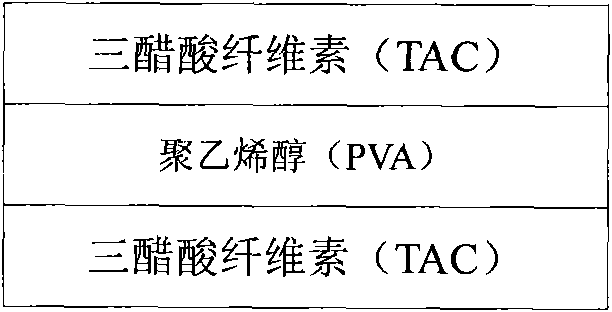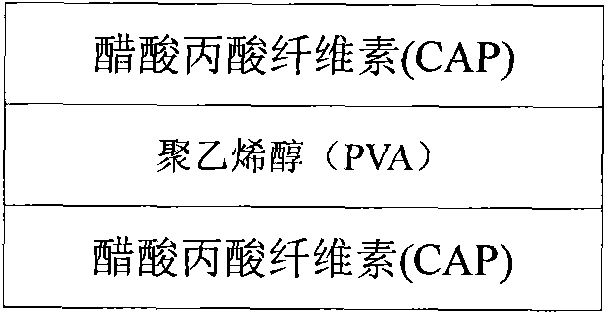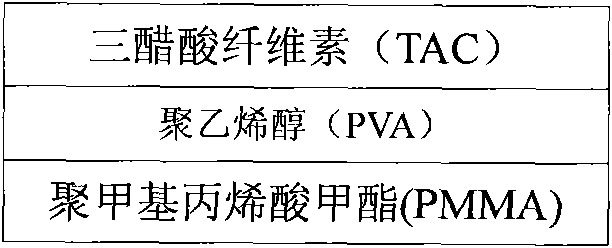Polarized lens and method for manufacturing same
A technology of polarizing lenses and manufacturing methods, which is applied in the direction of chemical instruments and methods, optics, optical components, etc., which can solve problems such as low production efficiency, unreachable thickness, slow supply, etc., and achieve the effect of accelerating production speed
- Summary
- Abstract
- Description
- Claims
- Application Information
AI Technical Summary
Problems solved by technology
Method used
Image
Examples
Embodiment 1
[0063] Treatment process: first chemically treat the membrane with acid and alkaloid water
[0064] Curing process: After dyeing with iodine and dyes, heat curing or UV curing is performed on the cellulose acetate propionate (CAP; CelluloseAcetate Propionate) film + polyvinyl alcohol (PVA; Poly Vinyl Alcohol) film.
[0065] Curing completion process: after attaching polymethyl methacrylate (PMMA: P oly m ethyl M eth a crylate) film to complete the UV hardened disc.
[0066] Finishing process: The attached lenses are molded into polarized lenses.
Embodiment 2
[0068] Treatment process: first corona treatment of the film with acid and alkaloid water
[0069] Curing process: After dyeing with iodine and dyes, UV curing is performed on triacetylcellulose (TAC; Tri AcetylCellulose) film + polyvinyl alcohol (PVA; Poly Vinyl Alcohol) film.
[0070] Curing completion process: after attaching polymethyl methacrylate (PMMA: P oly m ethyl M eth a crylate) film to complete the UV hardened disc.
[0071] Finishing process: The attached lenses are molded into polarized lenses.
Embodiment 3
[0073] Treatment process: first corona treatment of the film with acid and alkaloid water
[0074] Curing process: After dyeing with iodine and dyes, UV curing is performed on triacetylcellulose (TAC; Tri AcetylCellulose) film + polyvinyl alcohol (PVA; Poly Vinyl Alcohol) film.
[0075] Curing completion process: the UV hardening disk is completed by attaching a cellulose acetate propionate (CAP; Cellulose Acetate Propionate) film and a triacetyl cellulose (TAC; Tri Acetyl Cellulose) film.
[0076] Finishing process: The attached lenses are molded into polarized lenses.
PUM
| Property | Measurement | Unit |
|---|---|---|
| thickness | aaaaa | aaaaa |
| thickness | aaaaa | aaaaa |
| thickness | aaaaa | aaaaa |
Abstract
Description
Claims
Application Information
 Login to View More
Login to View More - Generate Ideas
- Intellectual Property
- Life Sciences
- Materials
- Tech Scout
- Unparalleled Data Quality
- Higher Quality Content
- 60% Fewer Hallucinations
Browse by: Latest US Patents, China's latest patents, Technical Efficacy Thesaurus, Application Domain, Technology Topic, Popular Technical Reports.
© 2025 PatSnap. All rights reserved.Legal|Privacy policy|Modern Slavery Act Transparency Statement|Sitemap|About US| Contact US: help@patsnap.com



